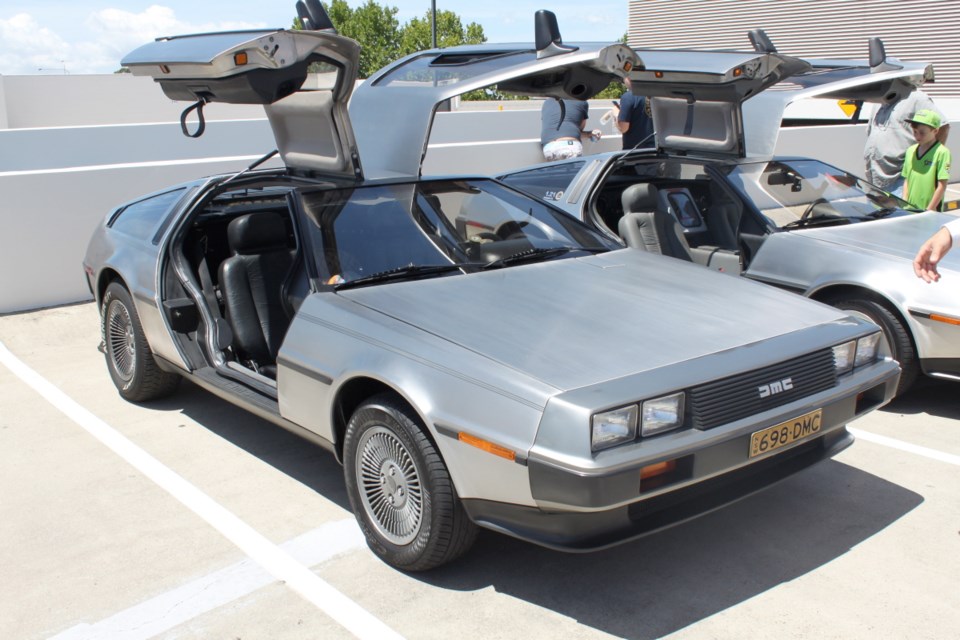It should have been the realization of the classic American Dream — a lower middle-class immigrant’s son from a tough Detroit neighbourhood puts himself through technical college while helping support the family. Hard work and intelligence eventually brings him within sight of the presidency of the world’s mightiest corporation.
John Zachary DeLorean was born in Detroit on Jan. 6, 1925. Despite a spotty primary education, partly in California where his mother fled during marriage problems, DeLorean qualified for Detroit’s well-regarded Cass Technical School.
With a scholarship, he graduated in engineering from Detroit’s Lawrence Institute of Technology in 1948. A summer job with Chrysler Corp. introduced him to the auto industry and completion of a master’s in engineering at Chrysler Institute in 1952. He took a master’s in business administration from the University of Michigan.
Deciding that Chrysler was too big, DeLorean moved to Packard, where he gained valuable experience in a variety of assignments, from machine shop to road-testing cars. Within four years, he headed Packard’s research and development.
When Packard and Studebaker amalgamated to become Studebaker-Packard in 1954, DeLorean saw a dim future. In September 1956, he joined the Pontiac Division of General Motors, mainly because he was impressed with Pontiac’s general manager, Semon (Bunkie) Knudsen and newly appointed chief engineer Elliott (Pete) Estes. Knudsen became DeLorean’s mentor, introducing him to the right people, imparting the nuances of corporate politics and instilling strong self-confidence.
Pontiac’s staid but reliable “old lady” image was about to be transformed when Knudsen formed an Advanced Engineering Department with DeLorean in charge. It probably accomplished more than Knudsen expected.
Pontiac soon became a winner in stock-car racing, success that was reflected in increased sales.
In 1961, Knudsen moved to become general manager of Chevrolet, Estes became Pontiac’s general manager and DeLorean its chief engineer. Those were memorable years for Pontiac, with many successes and a few failures.
Outstanding achievements were the Wide-Track Pontiac, Grand Prix, Firebird Trans Am and GTO that spawned the 1960s muscle-car craze. Less successful were the Tempest’s torsion bar “rope drive” driveshaft and huge, rough-running “half a V-8” 3.2-litre slant four.
DeLorean’s career was in full flight. He became Pontiac’s general manager in 1965, the youngest in GM history, and in 1969 the general manager of GM’s flagship division, Chevrolet.
Chevrolet had administrative problems and was losing market share, but DeLorean turned it around, including struggling with the star-crossed Vega. In 1972, at age 48, he was promoted to GM’s fabled fourteenth floor as group vice-president, car and truck production.
DeLorean’s meteoric rise put him within sight of GM’s presidency, but there was trouble ahead on mahogany row. Behaviour that was tolerated in free-wheeling car divisions, provided sales were good, was frowned on in the executive suite.
DeLorean found “paper shuffling” boring. His personal life and philosophy were out of sync with the conservative corporation. His dress, hairstyle, divorce and consorting with glamorous movie stars clashed with GM’s staid management culture. It all came to a head in April 1973, whenDe Lorean resigned from his $650,000-a-year job. He probably didn’t have a choice.
DeLorean hinted that he left because his ethics and values were incompatible with GM’s. He became an American folk hero, further consolidated when he vowed to build an “ethical car.”
DeLorean founded DeLorean Motor Co. in 1974, and a stainless steel-clad prototype two-seater sports coupe was completed by 1976. Styled by famed Italian designer Giorgetto Giugaro with extensive engineering input from Lotus of England, it had a rear-mounted Peugeot-Renault-Volvo single-overhead-cam 2.8-litre V-6, steel backbone frame and gullwing doors.
The charismatic DeLorean went searching for governments to subsidize his project. He found socialist Britain anxious to create jobs in troubled Northern Ireland, and a factory was built in Dunmurray near Belfast. DeLorean DMC12 production began in January 1981.
But independent testers found the rear-engined, 1,288-kilogram DeLorean slow — zero to 100 km/h in 10.5 seconds, top speed 175 km/h — and the handling erratic (Road & Track, December 1981).
An early-1980s recession depressed the market for specialty cars, and by 1982, British government subsidies stopped amid rumours of impropriety. DeLorean Motor Co. went into receivership after producing about 7,500 DeLoreans.
The final blow came in October 1982, when DeLorean was arrested in Los Angeles for alleged cocaine trafficking, an apparent attempt to save his company. He pleaded entrapment and was acquitted in 1984, too late to rescue DeLorean Motor Co.
DeLorean settled in New Jersey, became a born-again Christian and declared personal bankruptcy in 1999. He died in March 2005 at age 80, the American Dream unfulfilled.



